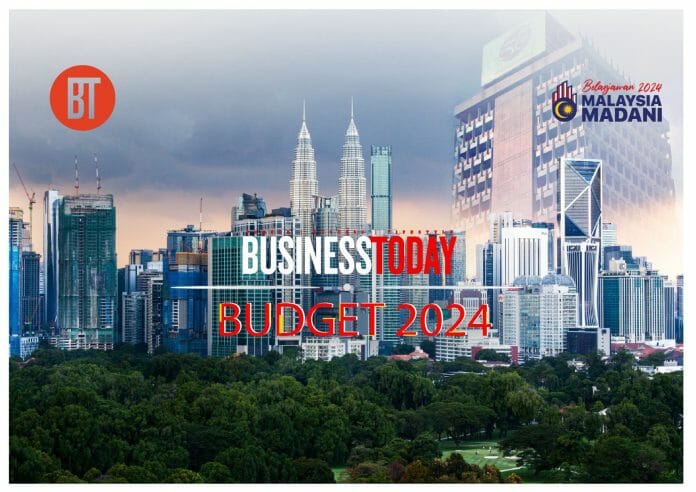The government projects a 1.5% yoy expansion in revenue growth with collections at RM307.6bn in 2024 from RM303.2bn in the year prior. This is a softer revenue growth compared to 2023 at 3.0% yoy and modest compared to historical average (2010-2022: 5.3%).
The subcomponent of tax revenue is estimated to show positive growth given better economic expectations, while contraction is seen in non-tax revenues amid reduced investment income collections.
CGSCIMB said today (Oct 16) that in summary, federal government revenue is forecasted to be driven by:
Robust growth in corporate income taxes
Among all the tax components, corporate income tax projection is the most robust at 8.1% yoy in 2024 albeit softer compared to the prior year at 19.8%. Collections from corporate tax is projected to come from natural growth, through better economic conditions ahead, as well as more stringent audit and tax compliance.
Lower contribution from oil-related revenue to RM61.8bn in 2024 (20.1% of total revenue) from RM69.8bn in 2023 (23.0% of total revenue) primarily coming from lower Petronas dividends.
Nevertheless, the government assumes higher average oil prices this year at US$85 per barrel vs. US$80 per barrel in 2023.
Indirect tax collection to rise to RM58.6bn from RM56.0bn in 2023, representing growth of 4.7% yoy. Higher growth in Sales & Services Tax (SST) is projected, assuming resilient domestic consumption.
In addition, higher collections will also come from imposing excise duty on nicotine products, sugar tax on premixed beverages, as well as stable collection in automotive-related taxes.
Non-tax revenue is set for a contraction of -13.8% yoy (2023: -13.3%), reflecting a major readjustment downwards to RM64.0bn from RM74.2bn.
The major culprit is weaker expected contribution from Petronas, with dividend contribution to be lower at RM32bn from RM40bn seen in 2023.
Federal government expenditure
OPEX up but DE falls
The government projects the outlay for operating expenditure (OPEX) to rise by RM3.7bn to RM303.8bn, or +1.2% yoy in 2024. As a share of GDP, 2024 OPEX drops to 15.4% from 16.2% in the year prior.
Among components, the major drag to OPEX comes from the lower subsidy allocation:
Subsidies and social assistance recorded a significant decline at -17.9% yoy or RM11.5bn reduction to RM52.8bn. This reflects the assumption of targeted subsidy implementation mainly on fuel and electricity.
Among the three ‘fixed costs’ components – emoluments, pensions, and debt service charges – the latter rose the steepest at +8.0% yoy as a result of accumulated Government debt. Meanwhile, pensions grow modestly (+1.1% yoy) while emoluments are expected to rise (+4.8% yoy).
Supply & services is expected to record a steep growth of 11.9% to RM38.0bn with the bulk of spending allocated to material supplies, cleaning and security services, repairs, as well as utilities.
In line with expectation, CGSCIMS cited that development expenditure (DE) fell to RM90bn in 2024, from RM97bn from 2023, reflecting a contraction of 7.2% yoy. At estimated level of spending, the DE accounts for 4.6% of GDP, falling from the record high of 5.6% seen in 2023.
However, taking into account that 2023 DE spending included the USD3bn (RM13.3bn) 1MDB bond paid in Mar 2023, the DE spending in 2024 in actuality is higher than in 2023.
Spending is divided into:
Economic sector: The bulk will go to the transport sector for the construction of roads and highways. Notable mentions include the construction of additional lanes for PLUS highway, upgrading of federal road networks, LRT and MRT construction, Pan Borneo highway, as well as ECRL.
On the industry subsector, spending will go towards fulfilling the goals stated in the New Industrial Masterplan 2030.
Social sector: The Education subsector, which accounts for the largest component, will see the construction of 18 new schools.
Meanwhile, spending on the healthcare subsector will go towards upgrading healthcare facilities and equipment.
Security sector: Defense receives slightly more allocation this year at RM7.4bn while internal security receives RM5.1bn. Spending focus will be on development projects, upgrading equipment, and refurbishing police stations.









